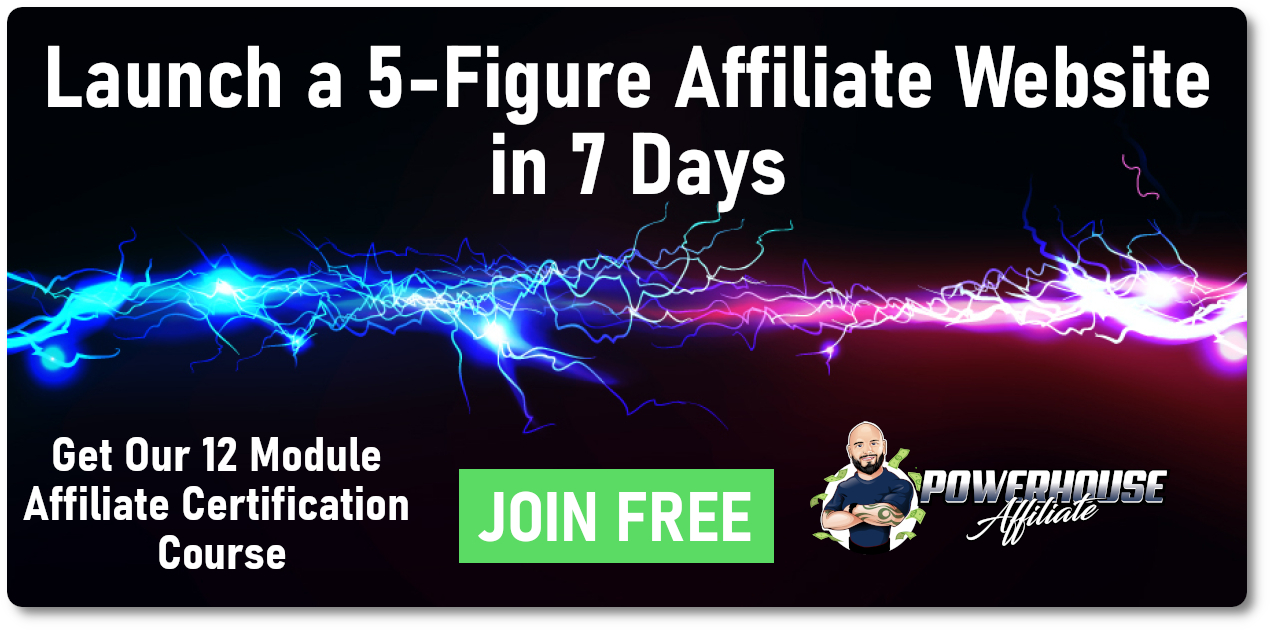Direct response copywriting is a form of copy optimized to make your target audience take the desired action right after being exposed to it. It could be buying a product, subscribing to your newsletter, sharing your content, and the list goes on.
In this guide, we’ll be covering everything you need to know about direct response copywriting for beginners so you can easily create high-converting marketing content for your business.
We’ll talk about the differences between this and other types of copy, the key aspects that can make or break your direct response copy, how to write this type of copy better and faster, and more.
Let’s get started.
Table of Contents
Ultimate Guide for Direct Response Copywriting for Beginners
Direct Response Copywriting for Beginners – What is it and How’s it Different from Other Forms of Copy?
Copywriting means writing persuasive content that compels the reader to take a pre-determined action, such as making a purchase, following you on social media, signing up for a webinar, and more.

That action, however, doesn’t always have to be taken right after they read or hear it. Take TV ads, for instance. Brands will often make you watch their ads dozens of times with the sole purpose of keeping their brand top-of-mind in your head. That’s why many TV ads don’t even have CTAs (calls-to-action).
That way, when you finally decide to buy a product they sell, later on, you’ll think of their brand first before thinking of their competitors. And if they’ve done their job right, you’ll have a positive image of it and will be much more likely to buy from them than you’d be otherwise.
Similarly, many digital ad campaigns are optimized to maximize the number of impressions rather than clicks, aiming to generate brand awareness instead of trying to convert. This ultimately means more conversions and customers in the long run. Here is an example.
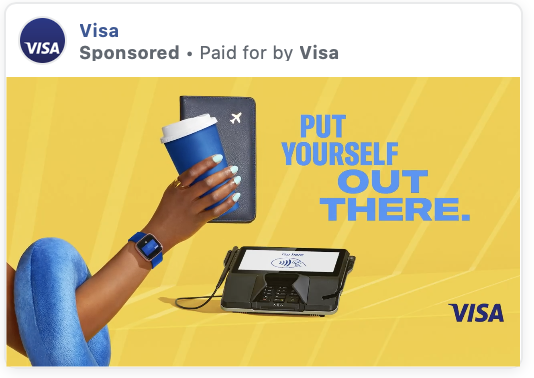
But if your goal with a specific part of your marketing content is to make the reader go to the next stage of your funnel, you need to approach things differently. The goal, in this case, should be to create something that triggers an immediate response from them.
That’s where Direct Response Copywriting comes in.
By clearly communicating what value propositions people will get after taking a specific action and using a set of strategies meant to remove friction, direct response copywriting sharply increases the odds of them doing what you want.
Which action we’re talking about depends on which stage of your sales funnel they’re at.
If they’re just hearing from you for the first time, it’s probably too soon to attempt the sale of a high-ticket product. In this case, you’re much better off inviting them to subscribe to your email list or to a webinar, which would give you enough exposure to build trust and try to sell later on.
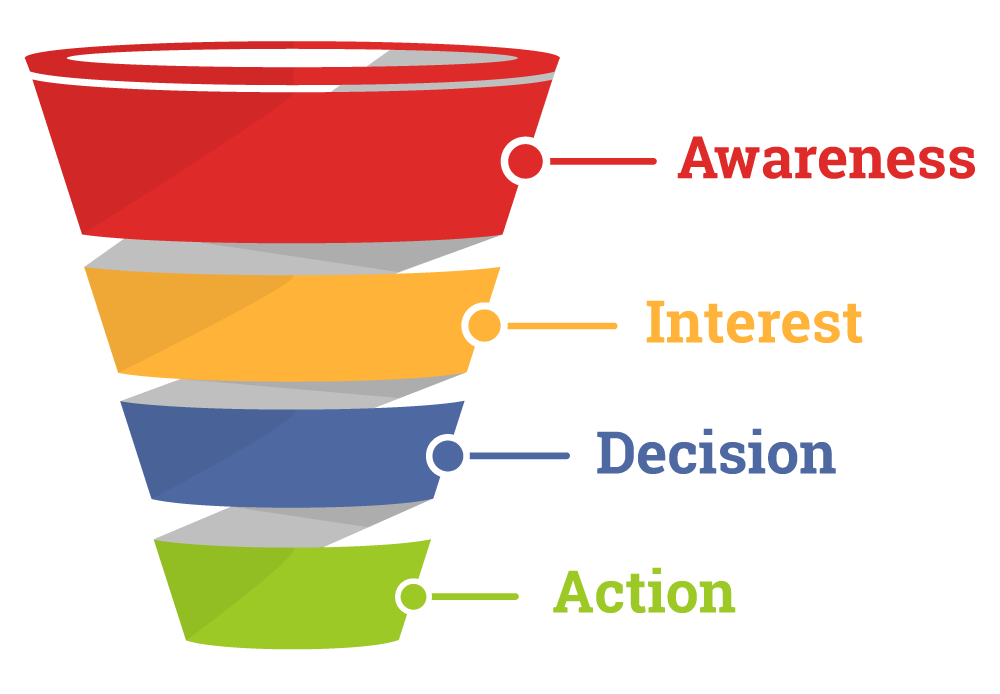
On the other hand, if we’re talking about someone who’s been following you for a while, then it might be time to become a little more aggressive and go for the sale.
In both cases, see how we’re going for an immediate response from our audience, whether that’s buying or following for more content.
Here’s an example of direct response copy:

Direct response copywriting can be used in:
- Digital ads
- Landing pages
- Webinars
- Email marketing
- Etc…
For small businesses and solopreneurs, there are still times when it’s good to create content that doesn’t require a direct response. That includes social media posts and emails primarily aimed at delivering value to the reader to build trust and demonstrate expertise.
However, due to their limited budget and smaller reach, ad campaigns focused on brand awareness don’t make as much sense to small businesses as they do for larger brands.
Besides, having a more limited budget means having to spend it more wisely. Direct response marketing allows you to measure results more accurately, as you can easily track what each customer has cost you with ad tracking software and how much they’re bringing in revenue.
Direct Response Copywriting for Beginners – Examples of Direct Response Copywriting
As we mentioned earlier, direct response copywriting is used when the lead is at the point of conversion and involves strategies to overcome barriers and trigger emotions that lead them to take action.
Let’s take a look at the things you must do or keep in mind as you’re writing direct response copy.
Create a Catchy Headline
Did you know that, on average, 80% of people will read headline copy, but only 20% will read the rest?
The headline is the first thing that consumers will read or hear from your marketing material. How great it is will dictate whether they’ll pay attention to the rest or not. No wonder why many marketers believe that crafting the perfect headline makes up for most of all the copywriting work.
Your headline’s primary goal is to convince your audience to keep paying attention so you can compel them to take action later on through your copy. You do this by promising a benefit that your ideal customer really cares about, or by creating something interesting enough so they’ll pay attention to the rest.
Here’s an example of a headline that promises a benefit:

Here’s another cool example that holds attention:

Write for One Specific Audience
The more you narrow down to a specific audience, the better you’ll communicate with it. Try to target every single person on the planet (or even anyone who resembles your target customer), and you won’t communicate properly with anyone.
Before creating your copy, try asking yourself questions about your target audience like:
- What’s their background?
- What are their demographics?
- What are the biggest pains and challenges they’re facing right now that they want a solution for?
- Based on the answer to the previous question, how can you help them the most?

Answering those questions will allow you to identify the most compelling arguments to use with your audience. While this won’t make you a great fit for most people on the planet, it’ll certainly make you the perfect fit for your ideal customer as you’re showing you understand and can actually help them.
Focus on the Benefits, not the Features
When it comes to convincing someone to take a specific action, you need to communicate very clearly what this person will get from doing what you’re asking. The best way to do that is by focusing on the benefits, not the features.
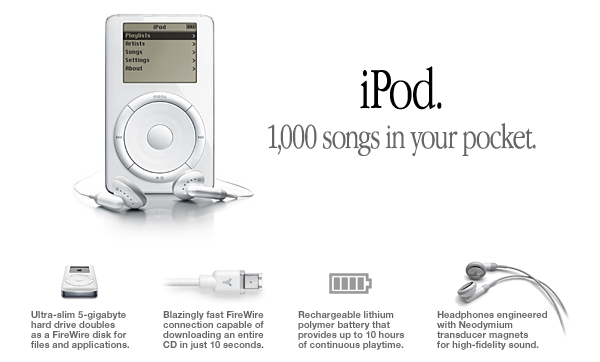
In this iPod example, see how the copy doesn’t just list down features. Instead, it reminds you of the benefits you’ll get from each of them, highlighting the biggest one in the headline.
If you’re trying to generate a purchase, don’t just list down your product’s features. Try to craft the copy in a way that makes your ideal customer visualize how your product will help them achieve their end goal. Remember that whatever you’re selling is just a mean for your clients to reach an end, never the end itself.
There is a famous saying “people want to buy a hole in the wall, not the drill”.
Write a Clear CTA that’s Easy to Take Action on
People’s attention span today is shorter than ever. That means that, even if you’ve done everything right with your copy so far, a bad call-to-action can make it all go to waste.
CTAs need to be short and clear and provide low risk. A ‘Try it free’ button would probably convert more than ‘Sign up’, even if both led to the same offer. (but you will never know unless you test and track)

CTAs must also be very easy to take action on. For example, Let’s say you’re adding an opt-in box on your site asking visitors to subscribe to your newsletter. Asking for their ‘Name’ and ‘Email’ is more than enough. Don’t bother them by asking about their occupation, how they met you, or when their birthday is.
The slightest amount of work can drive people away from taking action. Don’t create unnecessary barriers for your leads when they’re just about to move to the next part of your funnel.
Here’s a great example of what this means. Just by typing your email, you’re able to move to the next step.

Another common mistake is to have multiple CTAs. Ideally, when it comes to direct response copywriting, you must have a single call-to-action. Placing more than one option forces people to think about which one to choose, which creates extra friction and makes them less likely to do anything at all.
There are always exceptions for that, of course. But never add more CTAs than you actually need.
Create a Sense of Scarcity and Urgency
People have an insane addiction to procrastination, which means they’re unlikely to take action on something unless they think it’s their last chance of doing so. That’s why marketers so often come with things like Limited Time Offers and Limited Spots.
Here’s an example of how an ecommerce business could boost conversions by creating a sense of urgency:
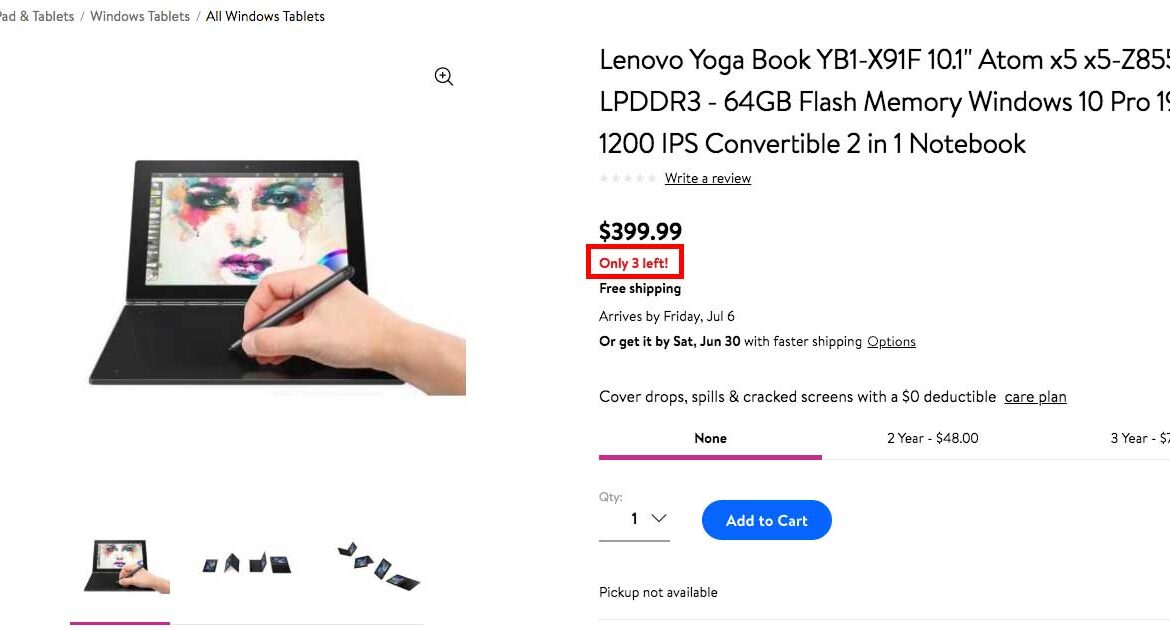
When you make it clear that your great offer won’t be available for long, you activate people’s Fear of Missing Out trigger (aka FOMO). In copywriting, that’s one of the things that generate the highest boosts in conversions.
Here’s another great example:
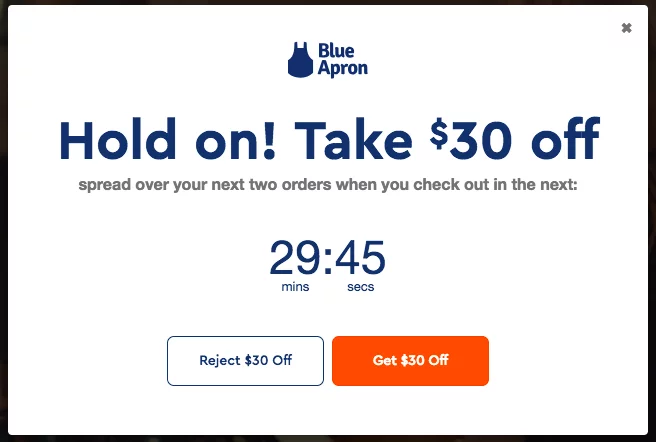
Direct Response Copywriting for Beginners – How to Create Amazing Copy Faster
Get inspired by great copy examples out there
One of the easiest ways to create effective copy is by looking at examples out there. You’ll not only find things that you can easily apply to your business with a few tweaks but will also start to understand better what great copy looks like and will be able to create your own from scratch more easily.
Just by browsing Google Images, you’ll find tons of marketing materials from different industries, and with different business goals that can get you inspired.
You can also check a website called swiped.co, which displays hundreds of marketing campaigns and breaks down why they work and how they could be improved.
Another way to go through this is by paying attention to examples in your daily life. What do the ads you see look like? When you open an influencer’s email, what’s the subject line? You can gain many insights from this alone.
Use AI Copywriting Tools
AI copywriting tools can save you loads of time when creating high-converting copy. Artificial Intelligence has come a long way and, by combining a lot of real-world data with Machine Learning, it can come up with very effective copy in seconds.
Here at Day Job Hacks, we use Jasper a lot. It was trained with formulas from the world’s best copywriters and includes many templates that can help you come up with great copy, including:
- AIDA Framework (Attention, Interest, Desire, Action)
- PAS Framework (Problem, Agitate, Solution)
- Facebook Ad Headline
- Facebook Ad Primary Text
- Google Ads Headline
- Google Ads Description
- Perfect Headline
- Persuasive Bullet Points
- Video Titles
- Email Subject Lines
- Feature to Benefit (that turns your product features into benefits that compel action)
- And more…
Check out our complete Jasper AI Review.
To have Jasper generate copy for you, you just have to insert the inputs like the product’s name and description and let it do the work for you. You can also select how many outputs you want and easily edit them. It even lets you pick the tone of voice you want.
Here’s an example using the AIDA Framework:
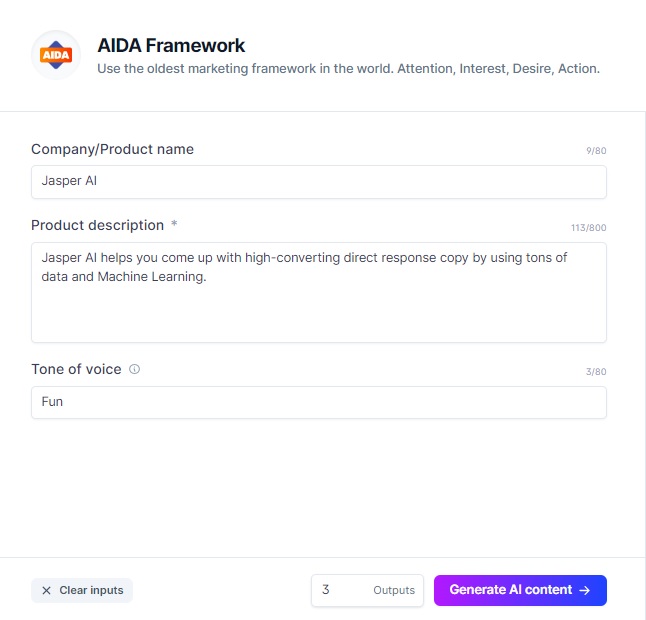
And here’s the first output that it came up with:
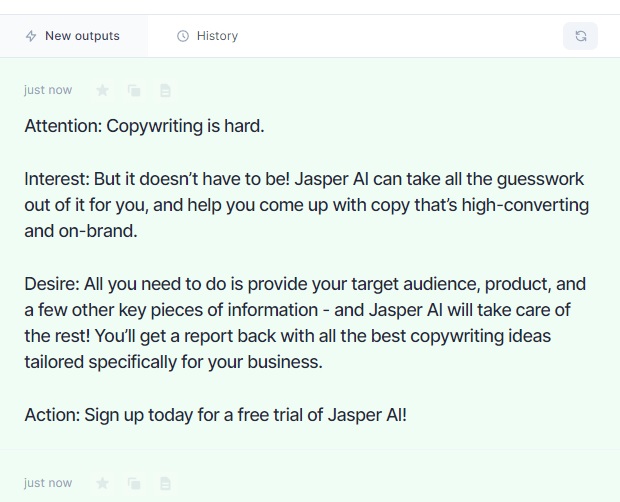
Try Jasper AI.
While we’ve found Jasper to be what works best for us, there are other AI tools around that also work in a similar way.
Find out the 11+ Absolute Best AI Copywriting Tools for Maximum ROI.
Run A/B Tests (and learn from them)
Not even the best copywriters in the world can tell which strategies will work best all the time. That’s why it’s crucial for any business that wants to optimize conversions and increase sales to test different copy variations and find out which converts more.
To begin, you could start testing different texts, images, and CTAs on different days of the week and see how that changes your conversion rates. If you use email marketing a lot, you could split your email list into two and apply one strategy to each.
If you do this right for a while, you’ll eventually see a sharp increase in conversions.
By optimizing a funnel, you’ll not only get more sales from that specific funnel, but you’ll also start seeing what works best for your audience and will start creating better copy from scratch.
Direct Response Copywriting for Beginners – Final Thoughts
Using direct response copywriting is a must if you aim to drive your conversions up.
It may seem intimidating at first, but by following all the strategies, advice, and tools we’ve given you throughout this guide, you’ll be able to create powerful and persuasive text that gets people to take action.
Don’t forget that it takes practice to become natural at it, and even the best copywriters in the world are constantly working to improve their skills.
- How to Make $1000 a Day With Google Ads Affiliate Marketing – Ultimate Guide - October 10, 2023
- Ultimate Guide to YouTube Shorts Ads for Affiliate Marketing - December 23, 2022
- How To Start Affiliate Marketing For Beginners [Ultimate Guide 2023] - December 21, 2022
